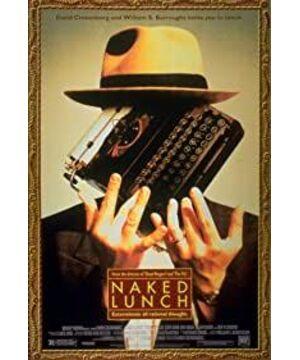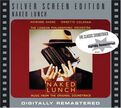Most cult films cut across many film genres (science fiction, horror, melodrama, etc.), although some film genres are also more prone to being cultish, such as the horror or sci-fi genres. Teen comedies are also more often rated as cult films, such as Dazed and Confused (1993), and Fast Times at Ridgemont High (1982), with quotable lines of dialogue, and memorable characters and scenes.
Many cult films feature or effectively showcase the performance of newcomers or other unknown talented actors/actresses. These often-obscure and cheesy films are usually made by maverick, highly individualistic film-makers with low-budget resources and little commercial marketing. And cult films are rarely, if ever, sequels, since then they would have attained mainstream appeal and widespread success. Some directors are more prone to making cult films, such as John Waters, Quentin Tarantino and David Lynch, especially early in their careers, because of their individualistic perspective and style, although they can often make a conventional'mainstream' film too (such as David Lynch's The Straight Story (1999)).
Many cult films fared poorly at the box office when first shown, but then achieved cult-film status, developing an enduring loyalty and following among fans over time, often through word-of-mouth recommendations. Sometimes, they were revolutionary, brilliant films' before their time' (ie, Fantasia (1940)) and not bound by the conventions of their day.
They elicit a fiery and intense passion in devoted fans, and may cause cultists to enthusiastically champion and become devoted to these films, leading to audience participation, fan club membership, and repetitive viewings and showings. Cult films have tremendous followings with certain groups, eg , college campuses,'midnight movie' crowds, independent film lovers, etc. Cult movie worshippers persuasively argue with all about the merits of their choices, without regard for standard newspaper or movie reviews from critics.
There's no hard-and-fast rule or checklist to gauge what makes a cult film. A cult film is often designated as such "in the eye of the beholder" without fufilling any definition. It's often a matter of opinion. One viewer's cult film may not be judged the same by another viewer. And just because a segment of devoted viewers (pre-teen girls) repeatedly watch a film-such as Pirates of the Caribbean: The Curse of the Black Pearl (2003)-to view its star Johnny Depp, or Titanic (1997) (to see Leonardo Di Caprio), or to view the latest George Lucas Star Wars film, doesn't make a film a cult film. However, there are the most popular cult films, such as The Rocky Horror Picture Show (1975) and any of the Star Trek films, that have developed cult followings with all the trappings.
One of the biggest, best-known cult films was not intended to become so popular. It was a low-budget, government'documentary' propaganda film from the mid-30s created to dramatize the dangers of marijuana use and demon weed-Reefer Madness (1936). However, Tod Browning's grotesque Freaks (1932), was deliberately advertised as "the strangest...most startling human story ever screened," and had alternate titles including Forbidden Love, The Monster Show, and Nature's Mistakes. It used real-life dwarfs, pinheads, and other human freaks (portraying sideshow circus performers) to present a jolting story of revenge.
When first released, Crouching Tiger, Hidden Dragon (2000) and Almost Famous (2000) were almost instantly pronounced as cult films, but as time progressed, they didn't really fit the category. They were highly-acclaimed, award-winning films that were prominently shown in the mainstream, and it had been too early to judge them as cult films. The media often labels an unusual film as a'cult film' when it really shouldn't. It takes time for a film to reach cult status.
Camp films are cult-type films, but they are often poorly made or ludicrous, yet still enjoyable and appreciated. Cult films follow no rules or pattern-some cult films are popular only among certain limited groups of audiences or friends.
Music- Based Cult Films:
Some cult films are music-based, such as director Rob Reiner's This is Spinal Tap (1984), a tongue-in-cheek spoof of rock documentaries, following a faux British heavy metal band's disastrous US tour; Pink Floyd: The Wall (1982 ), a bizarre film based on the popular rock album; Ken Russell's Tommy (1975), the Who's rock opera about a deaf, dumb, and blind kid who sure plays a'mean pinball'; and The Blues Brothers (1980), a farcical musical comedy involving two loser musicians who resurrect their old blues band.
The first of two other quintessential rock musical cult films include the transgender The Rocky Horror Picture Show (1975)-notable for inspiring the craze of interactive,'midnight movie' screenings. The iconic film was essentially a trashy tale set in a mysterious castle with kinky extraterrestrial Transylvanian transvestites, two stranded young people (including an underwear-clad Susan Sarandon), and a mad scientist. The second was a rebellious teenage musical comedy Rock'N' Roll High School (1979) that featured a rock band named The Ramones . Perry Henzell's urban-crime drama The Harder They Come (1973) with musical star Jimmy Cliff, featured a reggae soundtrack and a seamy look at poverty and crime in Jamaica.
Well-Regarded Cult Films:
A number of cult films are well-regarded, such as Frank Capra's It's a Wonderful Life (1946), that became popular many years after its initial release due to repeated television showings. Likewise, the classic weeper An Affair to Remember (1957) has developed a loyal following (it was a remake of Love Affair (1939), was paid homage in Sleepless in Seattle (1993) and remade as Love Affair (1994) with Warren Beatty and Annette Bening).
Others include the science fiction classic Forbidden Planet (1956) that has developed a wide cult following, Kubrick's intriguing A Clockwork Orange (1971)-a surrealistic tale of an ultra-violent future and the danger of psychological reconditioning, or Coppola's anti-Vietnam war epic of a terrifying journey into hell in Apocalypse Now (1979), or another Kubrick classic, Dr. Strangelove Or: How I Stopped Worrying and Learned to Love the Bomb (1964).
Frank Darabont's subversive, allegorical, and life-affirming prison story about two life-sentenced prisoners, The Shawshank Redemption (1994), based upon a Stephen King story, failed at the box-office during its original release, but established a strong cult following its video release. George Roy Hill, the director of such Oscar-winning hits as The Sting (1973) and Butch Cassidy and the Sundance Kid (1969), also helmed the comedy-drama Slap Shot (1977) with Paul Newman-noted as one of the raunchiest, most foul-mouthed, macho sports films ever made. Another highly-regarded cult film is Monte Hellman's low-budget Two-Lane Blacktop (1971)-a late 60s to early 70s entry in the road film genre-that was both an existential character study and a car-chase/race film.
A visually rich Philip-Marlowe style detective film, director Ridley Scott's Blade Runner (1982), set in futuristic, proto-punk Los Angeles in 2019, and about an ex-cop (Harrison Ford) who hunts down renegade human replicants, has developed a wide cultish following. An early 70s big-cult favorite was director Hal Ashby's dark, eccentric and macabre Harold and Maude (1971) about a strange taboo romance between a 20 year-old boy (Bud Cort) and a fun-loving, joie -de-vivre 79 year-old woman (Ruth Gordon) to the tune of a Cat Stevens soundtrack-with ingenious scenes of the spoiled rich boy's mock suicide attempts staged to upset his mother. A year earlier, Bud Cort had starred in Robert Altman 's quirky and satirical fairy tale Brewster McCloud (1970) as a bespectacled boy living in the Houston Astrodome where he was building a machine to escape and fly away. The Sound of Music (1965) when re-released in the late 20th century was presented as a sing-along version (with subtitles) along the lines of the participatory Rocky Horror, with fans dressing up as nuns, lonely goatherds and Nazis.
Conversely, some of the most praised films have pornographic origins, such as the ground-breaking Behind the Green Door (1972) due to its star Marilyn Chambers appearing in her first adult role (she was a former All-American Girl and Ivory Snow detergent model).
—— http://www.filmsite.org/cultfilms.html
View more about Naked Lunch reviews











